Since picking up film still cameras again in June, 2024 I’ve sampled a range of film stocks with wildly varying results, particularly in black & white. My earliest forays were plagued by technical problems with the cameras I was using, which had been sitting in a basement unused for 25+ years. Between my beginner’s enthusiasm to get out and shoot and slow lab turnaround where I was up in Canada, I ended up shooting a lot of film before I figured out I needed to service the cameras. The Hasselblad shots that actually came out looked great, but there were many blank frames because the Zeiss lenses, while optically brilliant, were mechanically unreliable with their in-lens shutters that hadn’t been fired this millenium. The shutter and frame advance mechanics of the M2 were also inconsistent, with some shots coming out quite underexposed, along with some random partial double exposures. Sadly this impacted some very interesting ‘you had to be there’ shoots early on, such as a day when a couple of hundred Canadian Hell’s Angels showed up at Elbow Falls, and the once-a-year Tsuut’ina Pow Wow.
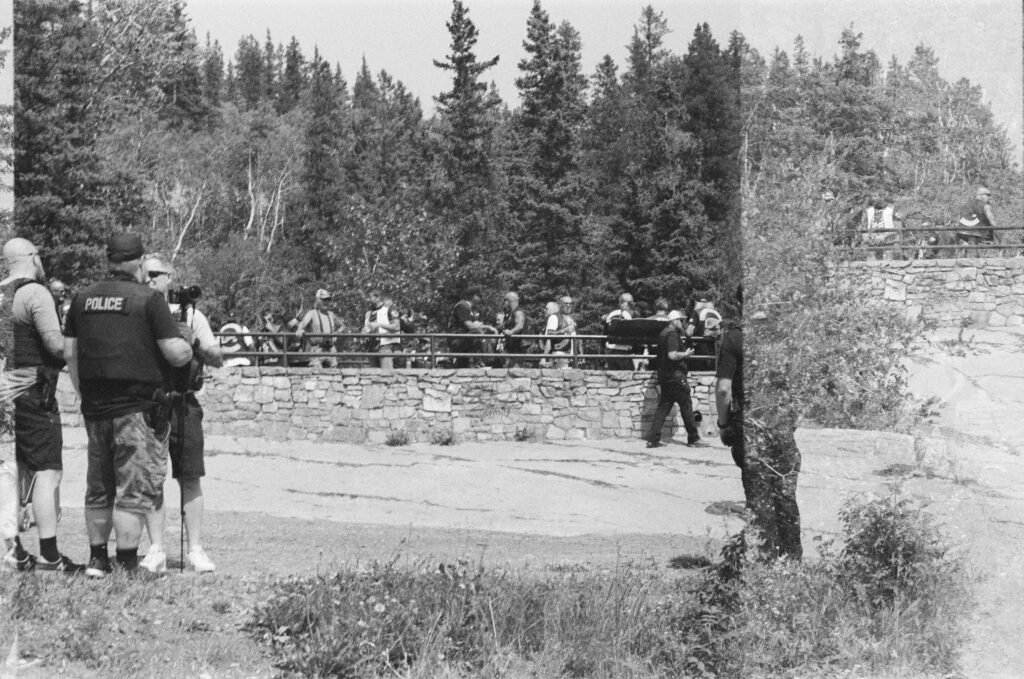
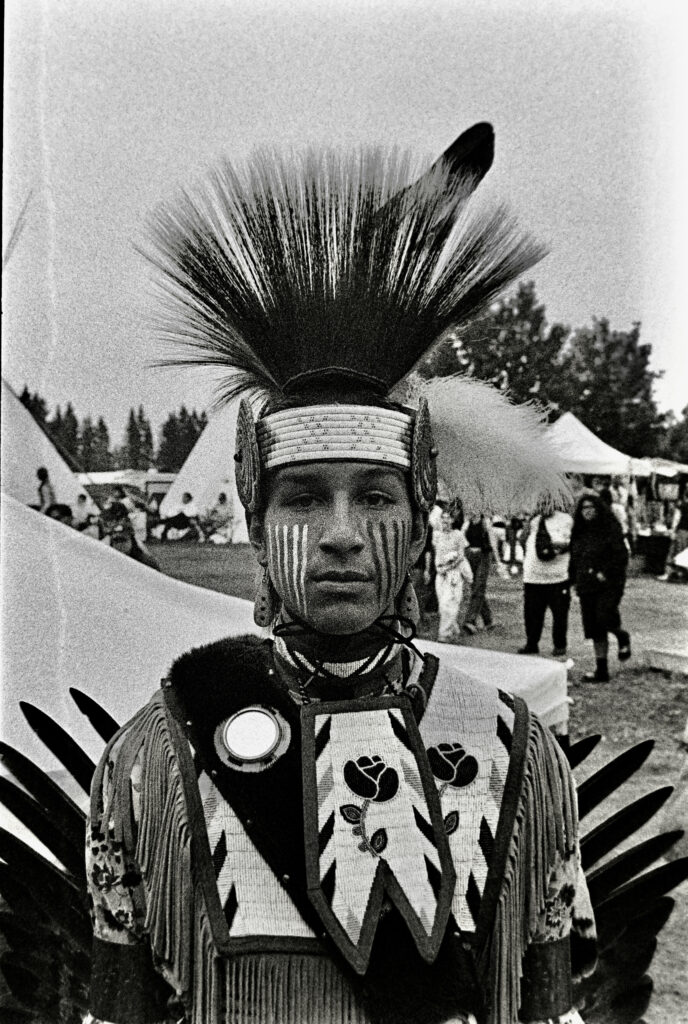
After seeing the results of my first wave of shooting, I realized that something was wrong and I needed to get all of my gear serviced. However, even after the CLA’s, my results were uneven at best. I had to troubleshoot how to get better looking photos. Most importantly, I had to learn to shoot better!
At first I assumed that Tri-X would be my reliable default b&w stock, based in part on my recollections of loving Tri-X 16mm reversal film when I was doing student films in the early 80’s. I also have to confess, I love the name “Tri-X”, which has a bit of 1950’s Sci Fi or Cold War spy movie vibe, but my early results were quite a bit grainier than I anticipated, and I wasn’t getting the nice contrast and deep blacks I remembered from university.
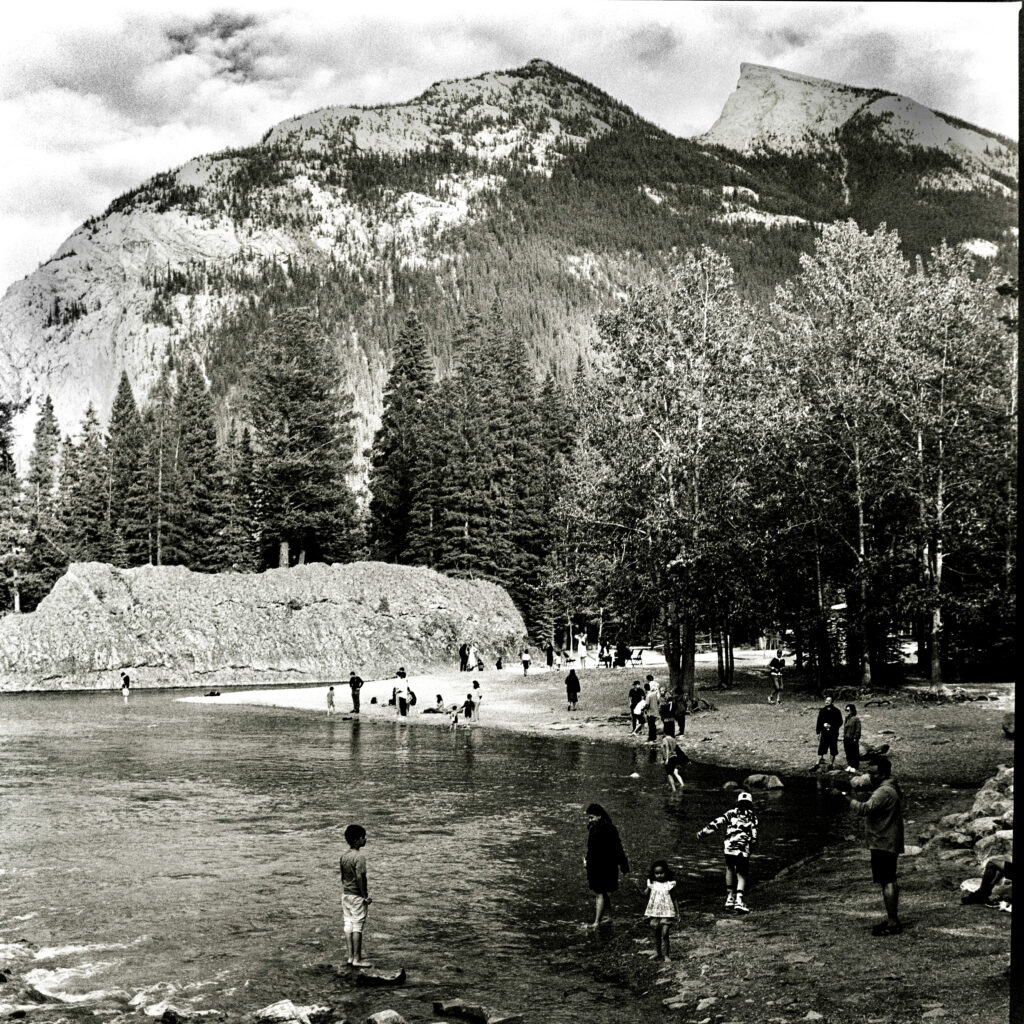
With the cameras in good nick and knowing I had some of the best lenses ever made, it was time to look at other parts of the workflow. The quest for getting better results on black & white have led me down many rabbit holes, including conversations about developer chemicals and tabular vs. non-tabular film — all well beyond where I was at that time (and still am) as a photographer. But I wasn’t shy about trying out different film stocks, so I decided to do a bit of a ‘grand tour’ to see if I could find the top color and black & white stocks that fit my emerging aesthetic as a photographer. Sorry I know that sounds pretentious — I was trying to figure out what kind of film I like. It was kind of fun to order a bit of a “pu pu platter” of single rolls of 120 film to test run the different lines offered by Kodak & Ilford, and some less well known (to me, at least) brands like Cinestill, Phoenix, Rollei & Agfa and featuring terminology that I knew very little about, like “Ortho” or “RPX”.
I also picked up an old Pentax Spotmeter V and started to teach myself how to calculate exposure. This shot is from a favorite ‘insiders’ vantage point of Canmore’s signature mountains that requires crossing the highway on foot, scrambling down a rocky culvert and then under a railroad bridge. What makes that particular spot popular for photographers is the strategically placed reflecting pool that perfectly mirrors The Three Sisters. I spent about 4 hours there one Sunday afternoon chatting with other hikers and photographers who happened by, watching the light pass over the mountains and shooting them in a ‘light study’ series like Monet’s Haystacks. In practice, the light shifted pretty slowly during the mid afternoon, and then things started to move pretty quickly toward the end of the afternoon. There was a bit of a ‘rush’ toward the part of the day where the last bits of sunlight were still hitting the granite peaks and four or five other photographers, clearly hip to the best timing for beautiful dramatic light, showed up for about 5-10 minutes to catch the peak moments.
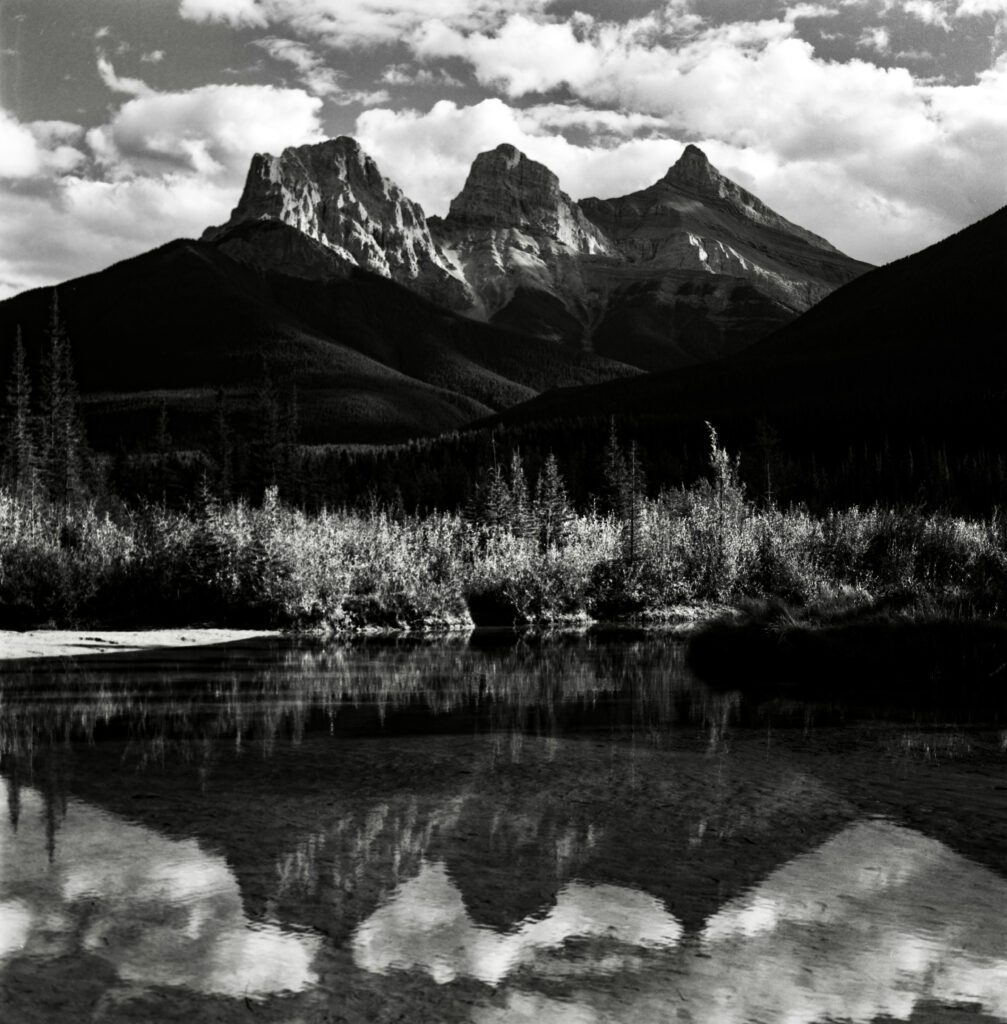
This was one of my better black & white shots from that time of day, shot on Ilford Pan F Plus 50. I really like the fine grain and deep blacks, but this shot feels a touch soft compared to some of my other shots that day. It’s hard to miss focus on a granite mountain at infinity, so I think there may be a little motion blur (even from a tripod) perhaps caused by the Hasselblad ‘mirror slap’ while shooting a slow stock with a red filter.
My lab options were pretty limited in that part of Canada, so I migrated all of my film photos from the native Apple “Photos” program to Lightroom to fine tune the scans as best I could. I spent a lot of time on the sliders on this shot taken on Delta 100, trying to find the sweet spot balancing the drama of the bright clouds against a dark sky while still preserving a bit of detail in the shadows of the large granite mountain face.
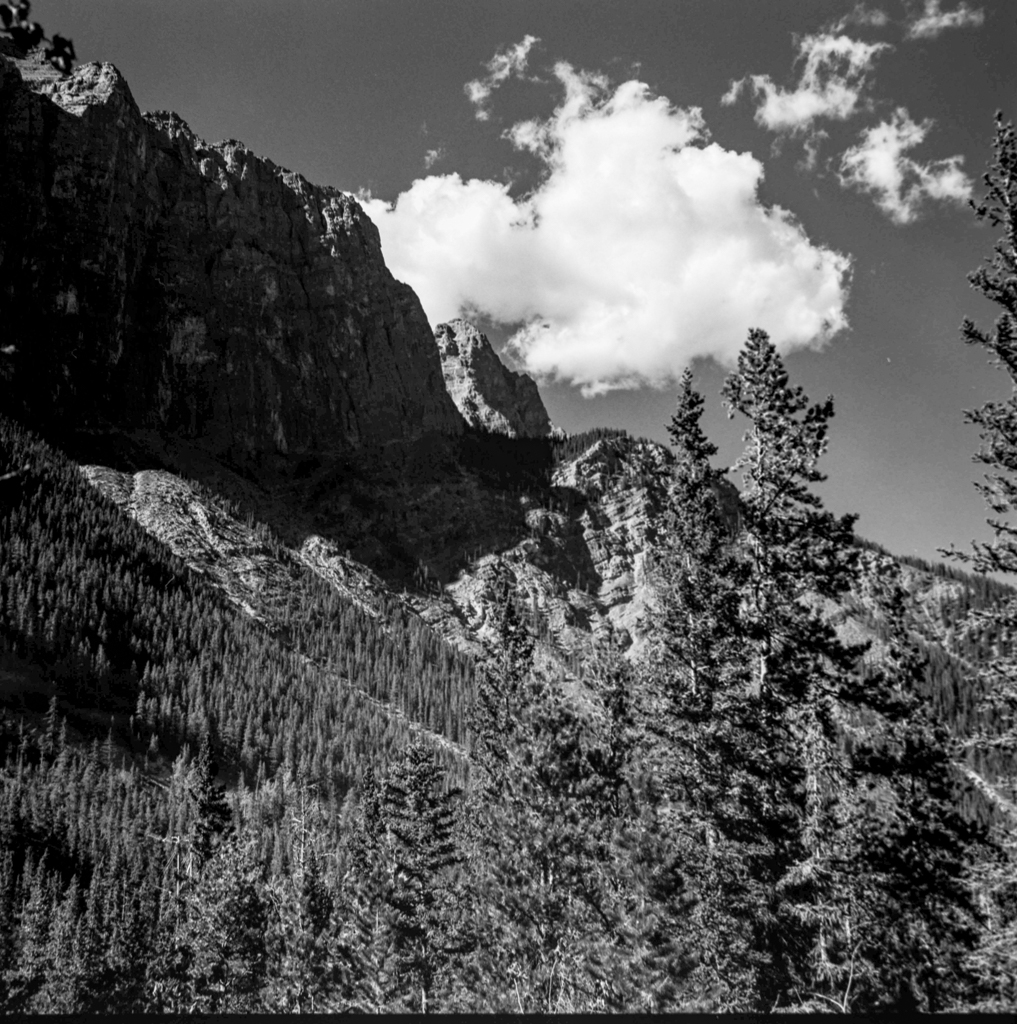
Looking beyond Tri-X for a 400 ISO b&w, I’ve done a fair amount of shooting with Ilford HP5, such as this one I grabbed of a model on the back of a NYC ferry boat. She was posing for another photographer who was shooting with a Rolleiflex (which was kind of cool.) That day I was trying out a recently acquired 1949 Leitz Summitar f2 and things got off to a faster start than I anticipated as this little scene unfolded in front of me just as the ferry got underway. I kind of ‘hitchhiked’ along with their small professional shoot and managed to grab a couple of quick shots with my M3 during the 10 minutes it took to cross from Fulton Landing in Brooklyn to Pier 11/Wall Street.
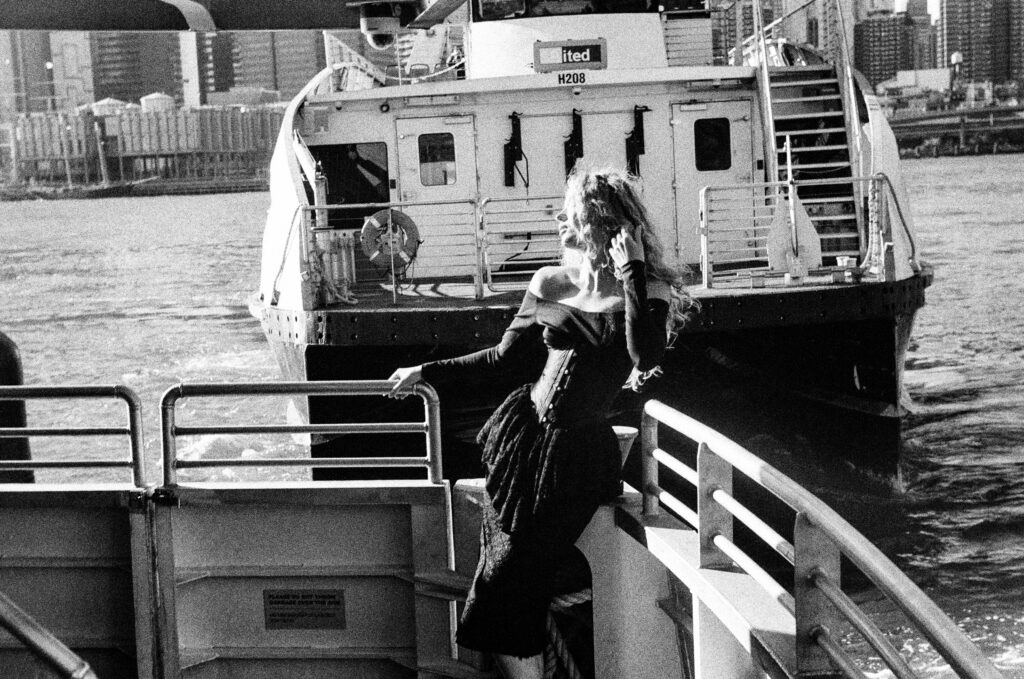
I’m happy that I’m getting better results on the fly than I was back in July at the Pow Wow or when the Hell’s Angels showed up unexpectedly, but I do sometimes find myself wishing for a 400 speed film that has a finer grain structure. On a side note, I’ve also found that I am almost always disappointed the first time I look at scans coming back from the lab. Often, I’ve built up my expectations based on what I remember from looking through the viewfinder and what I imagined the shot was going to look like. But after I start to get past my expectations and see whatever is really there on the negative, I can even learn to like or love the things I wasn’t quite expecting — like a bit of grain, the wide range of tones on the model, from the deep black shadows on her dress to the slightly blown out highlights on her hair and face, and the energy of the boats crossing paths with the Manhattan bank of the East River beckoning in the background.
Every once in a great while, something comes back that exceeds even my idealized imagination of what the shot was going to look like.
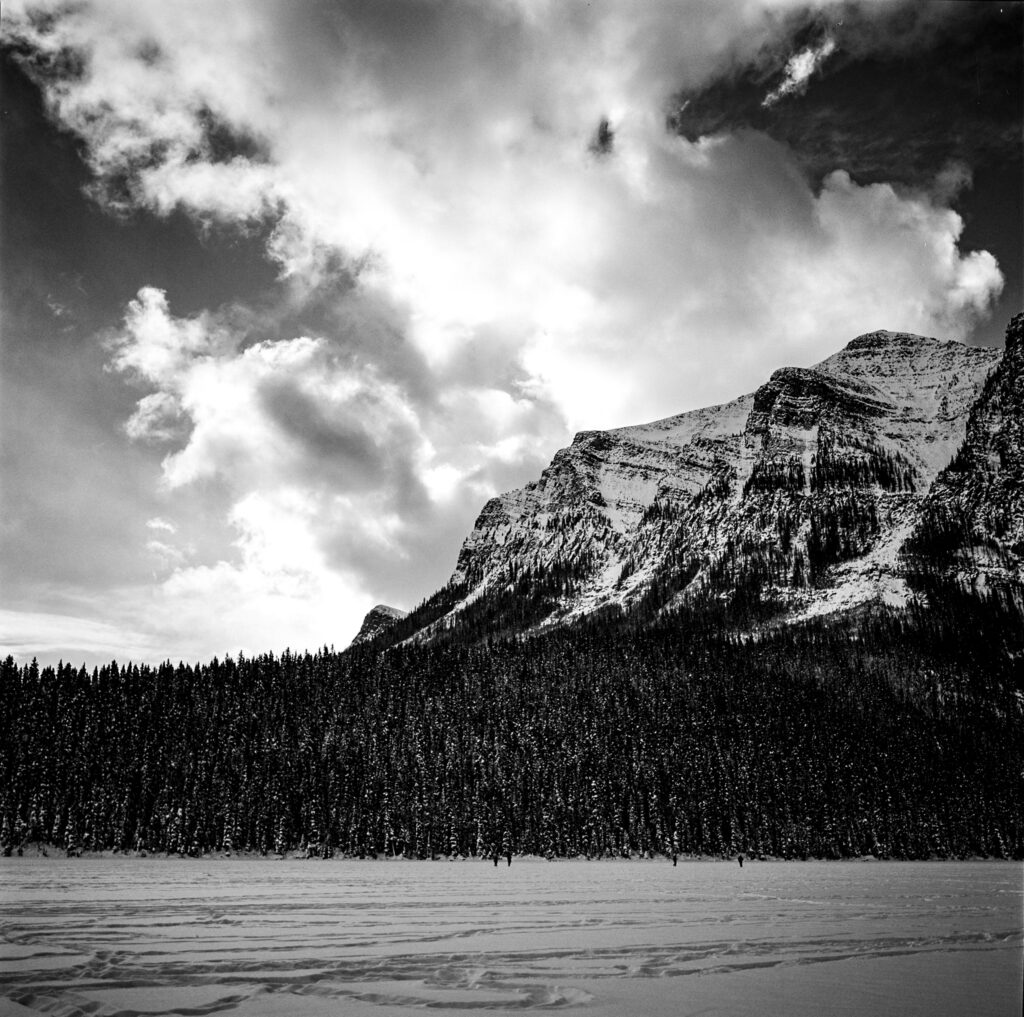
When this roll of XP2 (a stop on my ‘grand tour’) came back from the lab, I was wow’ed by the fine grain and the dynamic range, from deep black to brightest white, all on a 400 ISO film. That day on Lake Louise was magic — the light was beautiful all day and the sky and clouds added drama to the monumental landscape of the Canadian Rockies rising out of a frozen lake, where I was standing to take this shot. I was shooting with an orange filter that day and the sky in the upper right hand corner is such a deep dark color it feels like a window into outer space. XP2 was instantly a strong contender for a ‘go to’ black and white stock, but I still had a large batch of single rolls of different stock in the fridge, and I wanted to shoot them to see what I might discover along the way.
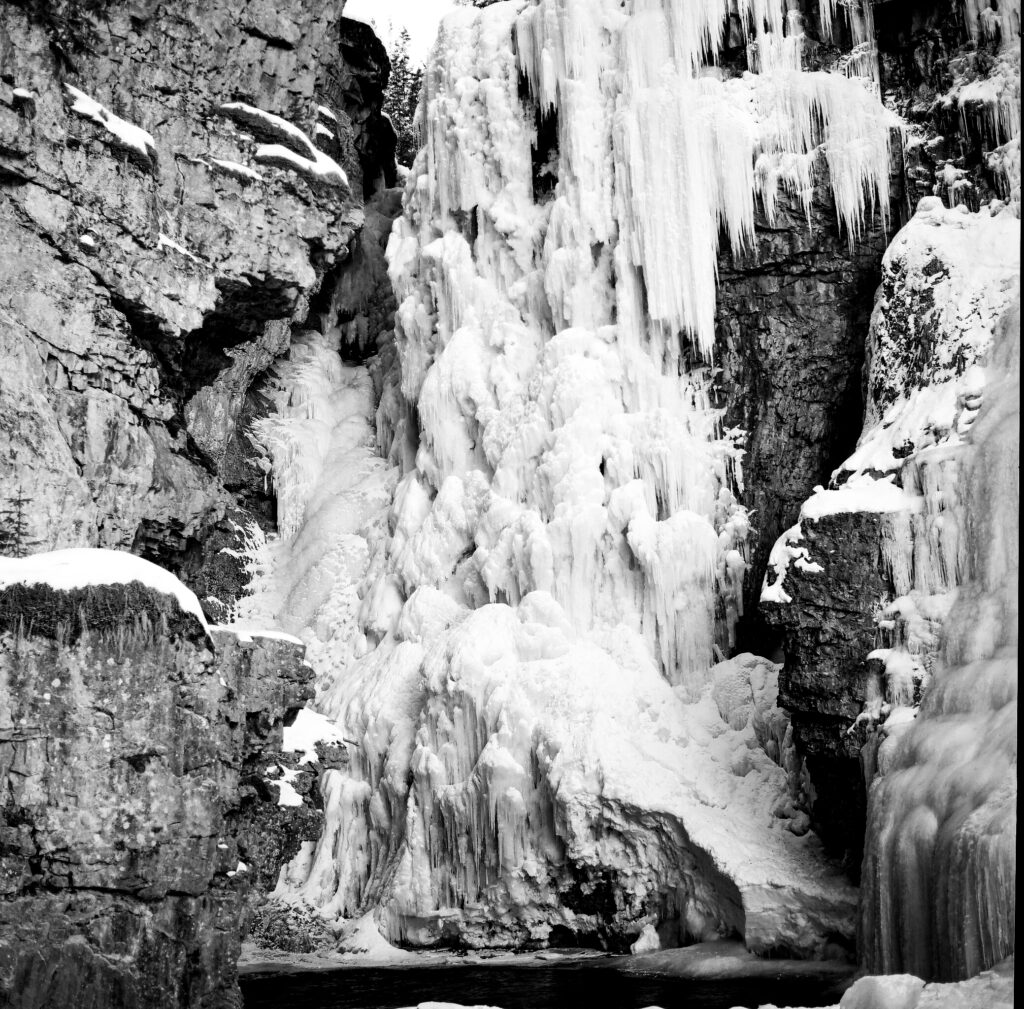
This shot of the High Falls of Johnston Canyon frozen into cascading icicles was taken on one of my last outings in Canada. I had come a long way from my early efforts of the summer, not the least of which was having the desire, energy and fitness to strap on some crampons and tote my full Hasselblad kit with a tripod up and down a 3 mile round trip of icy single track hiking path on uneven terrain. Since I had the tripod and was doing a literally frozen landscape, I decided to try out the slowest stock I had, Rollei RPX 25. I thought the results on that day were great and this might be one of my best overall technical shots in black & white. (I had also figured out that it was useful to retract the mirror and barn doors before tripping the shutter when shooting at such slow shutter speeds.) I would happily shoot RPX 25 again for landscapes, but wouldn’t attempt running around NYC doing handheld ‘street’ shots on a film that slow.
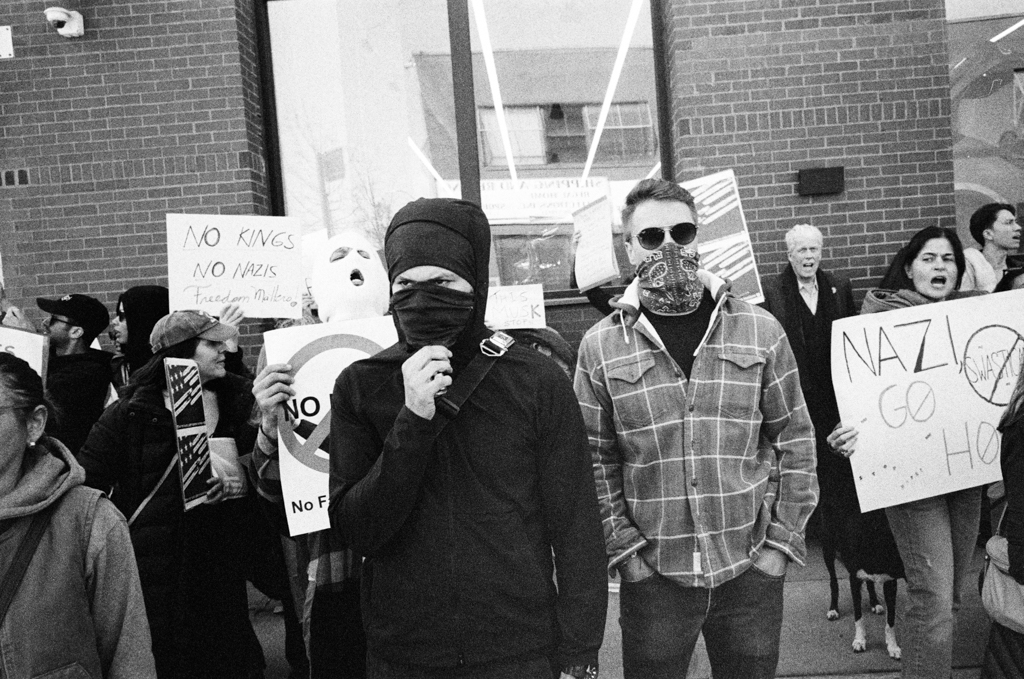
Speaking of NYC street shooting, I was doing a medium format photo walk with a friend of mine taking shots on the semi-neglected industrial waterways of Brooklyn when we happened onto this anti-Elon Musk protest at a Brooklyn Tesla dealership. I decided to grab my Leica instead of the Hasselblad for more of a quick-shooting documentary/photo journalist mode. I was trying out a ‘new’ lens that Hamish had posted about — an early aughts Voigtlander 28mm f3.5 that seemed like a good option for zone-focusing in situations just like this. For testing newly acquired gear, I’ve been ‘using up’ film I’ve had on hand for a while, and that day I happened to have some Tri-X loaded in the M3 for testing the Voigtlander on black and white. After going through the usual anger, denial, bargaining, depression and acceptance phases that happen when I get a roll back from the lab, I have to say I’m feeling like I might have been a bit hasty to move past Tri-X and that the problems with the shots I was getting in my first weeks/months of shooting may have been due to other factors. (I was also pretty happy with the the 28mm lens and zone focusing as a way to shoot in situations like this; the Color Skopar, true to its name, is also a great lens for shooting in color. Thanks for the tip, Hamish!)
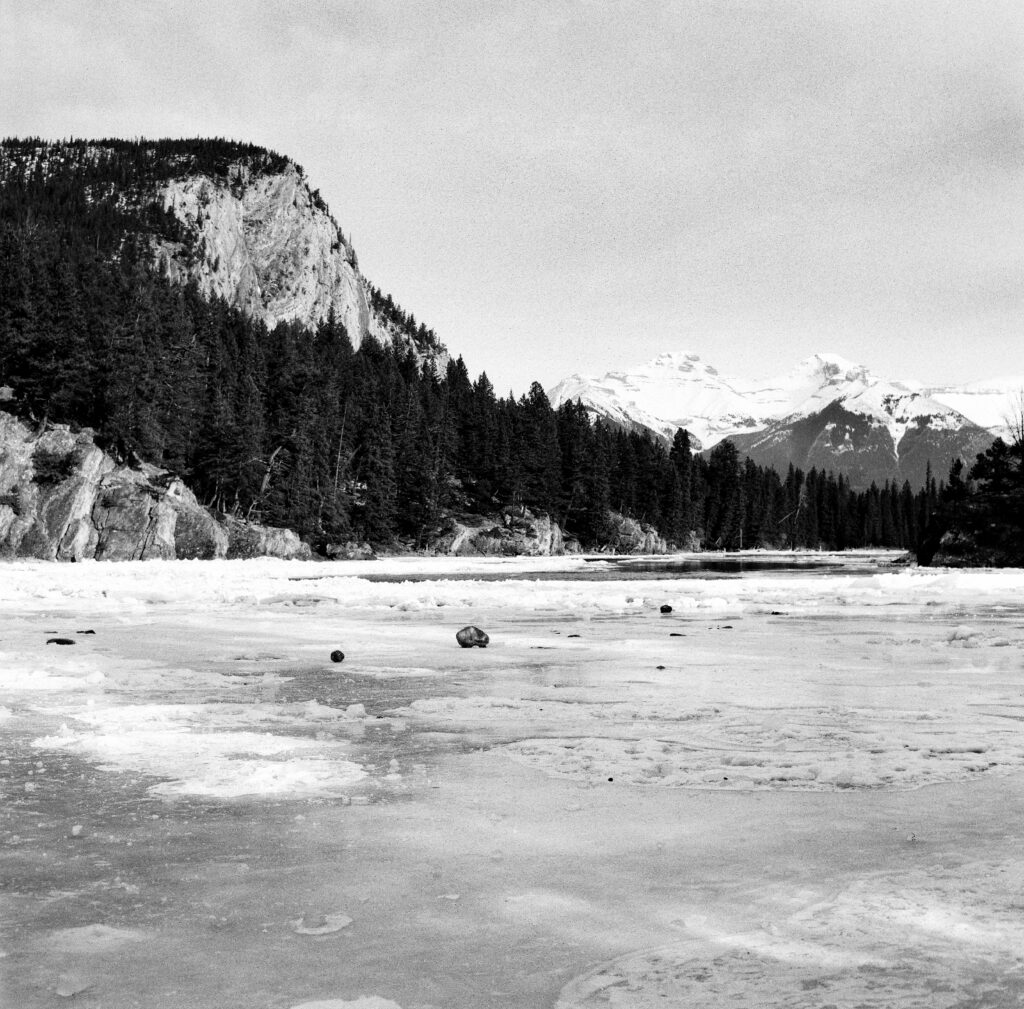
Back to that very cold final weekend photo outing in Canada, I tried out a roll of Rollei RPX 100 (and a new lab in NYC) and was pretty happy with those results. This shot has a very nice range from deep black to bright white, and I like the detail in the evergreens that often has gone full black for me on other stocks. There is also a sense of perspective that I feel looking at the large rocks on top of the ice receding toward the far shoreline. I am liking the Rollei RPX stocks quite a bit, and still have a roll of RPX 400 to try out that I’m very interested to see in action.
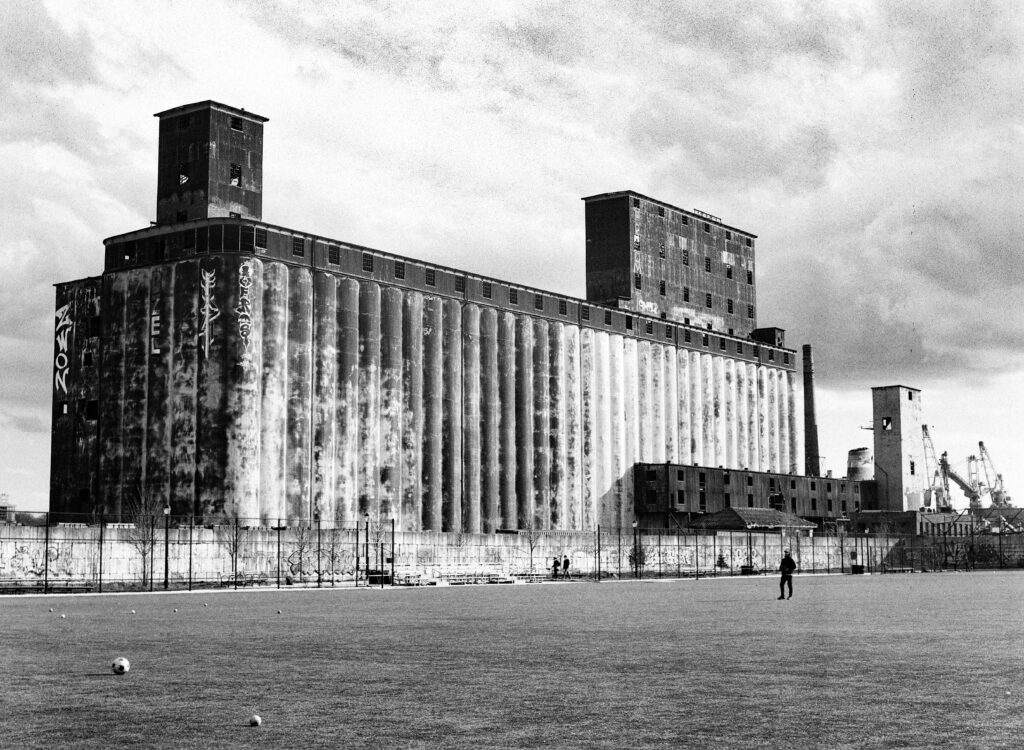
Now back in New York, the landscapes are different but my photographic adventures continue. This shot was of the derelict Red Hook Grain Terminal, a big monolithic structure on the Brooklyn waterfront that has fascinated me for years as a small piece of New York that seems invulnerable to gentrification. I was trying out a roll of Cinestill XX. I like the contrasting landscapes of the Canadian Rockies versus the urban industrial landscape of Brooklyn in vaguely similar compositions with mid-ground boulders and soccer balls providing a sense of scale, perspective and depth. I think the XX performs well.
Even now after 7-8 months of learning curve, from time to time, I will get a ‘bad roll’ back from the lab where there is a problem that can be hard to diagnose, especially when it’s using the same equipment, lab and techniques that I use on everything else I shoot.
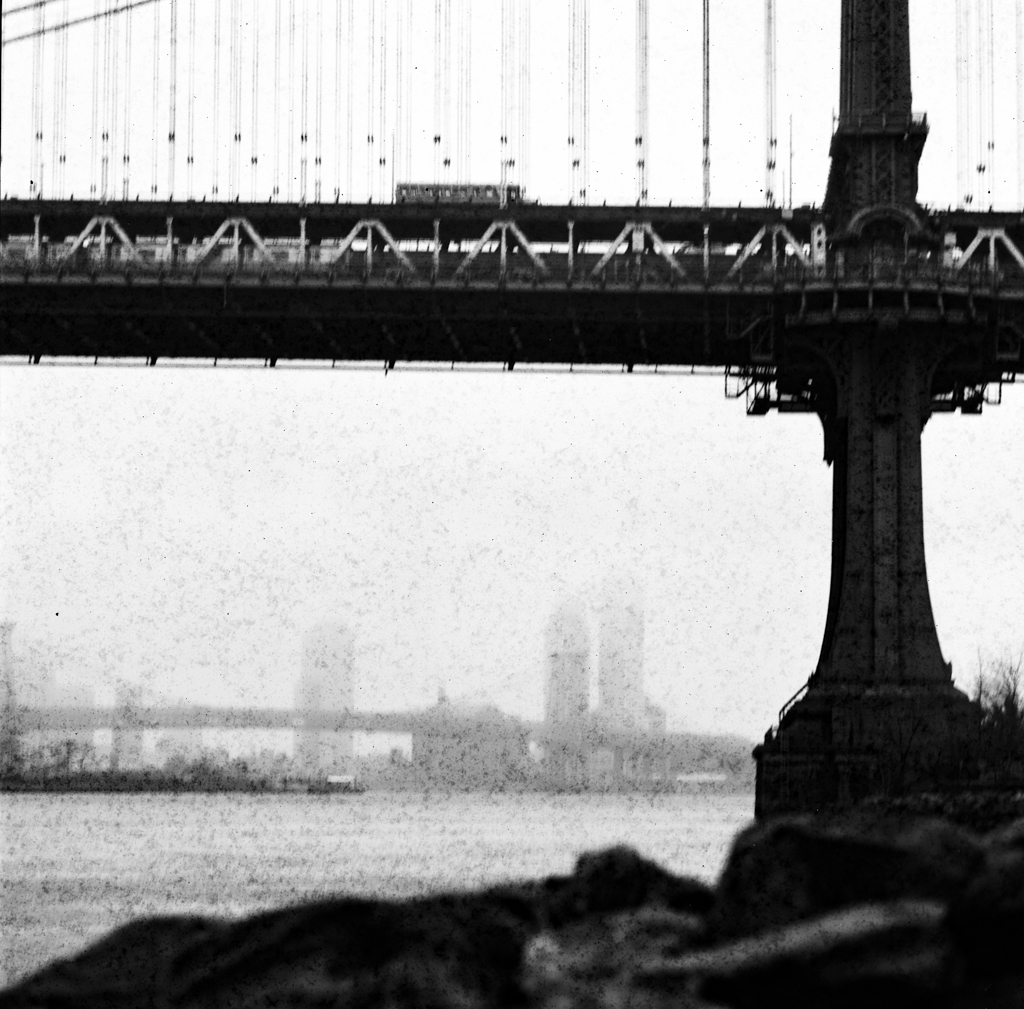
This roll of Rollei Retro 80S came back from the lab looking so retro that it felt like the negatives had been stored in some dusty desk drawer for 40 or 50 years and not cleaned prior to scanning. I’m not sure where, when or what went wrong on that roll, as most everything else I’ve been shooting since I got back to NYC has been pretty consistent and acceptable, if not good. I won’t judge the stock based on this one roll without trying to troubleshoot a bit, but I’m not sure when I’ll get around to shooting another roll of Rollei Retro 80.
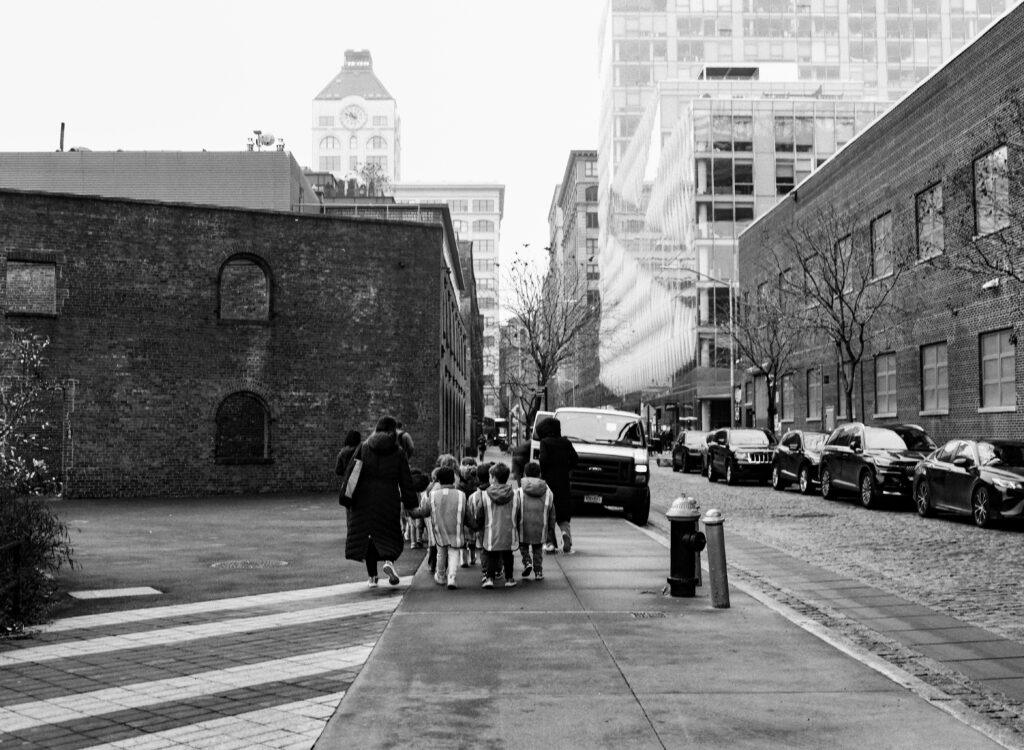
This is from one of my most recent outings in Brooklyn, and there’s a quality to this shot on Delta 100 that feels kind of ‘classic’ like it could have been taken when I was the age of those kids, despite their dayglo traffic vests and modern cars lining the cobblestone street. I immediately took to this photo, and a lot of the shots that I took that day on that roll of Delta 100 have a bit of that timeless quality.
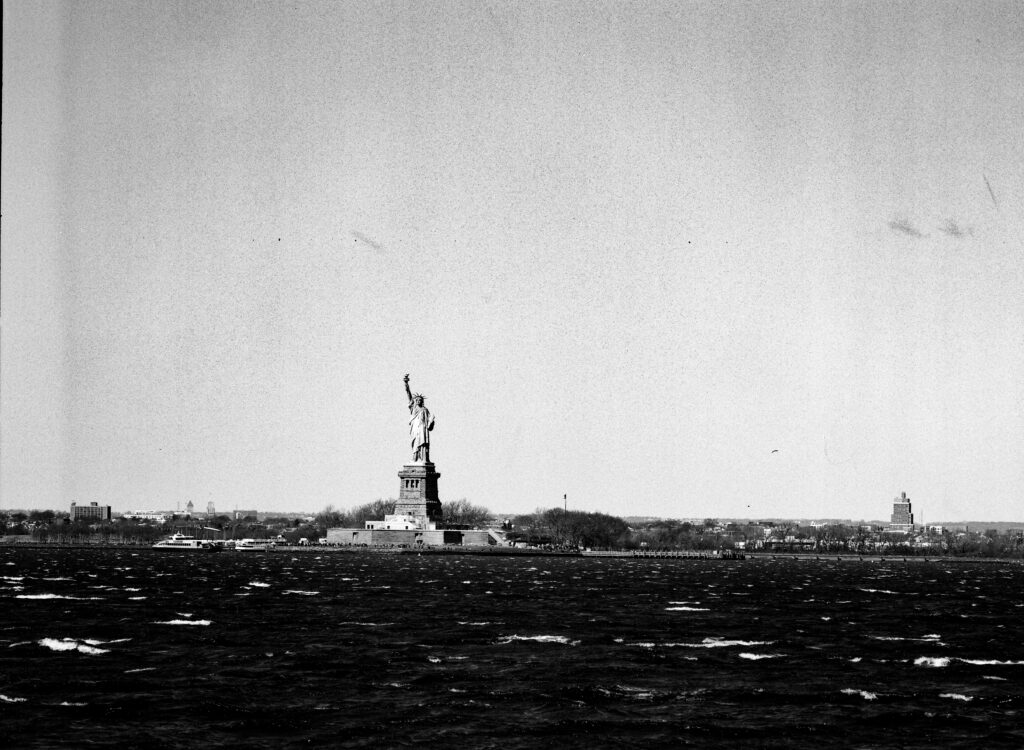
When I sat down to write this, I was thinking/hoping I would come out of this post with a firm idea on a black and white stock to use as a ‘when in doubt’ as Portra 400 has become my ‘go to’ color film stock. I want to choose wisely, as I still have a fair amount of 35mm Pan F Plus 50 I bought in an early blush of enthusiasm thinking it would be perfect for those Canadian landscapes. I find I don’t load it much on the Leica because I often shoot a single roll over multiple days and locations, and a 50 ISO doesn’t lend itself to much beyond a nice bright sunny day exterior. I like to be at the ready to grab the Leica and shoot something handheld without a lot of set up in case the Hell’s Angels or a fashion model show up unexpectedly.
I’d love to hear from the community about what stocks you like to shoot, and which shots of mine feel more or less strong, and if you have a main ‘go to’ stock, or if it’s more ‘horses for courses’.
The cover image for this post of ice crystals on Bow Lake north of Lake Louise, along the aptly named Icefields Parkway, was shot handheld, wide open on a bright sunny day using the Hasselblad 60mm Distagon f3.5 on Pan F Plus with an orange filter.
Share this post:
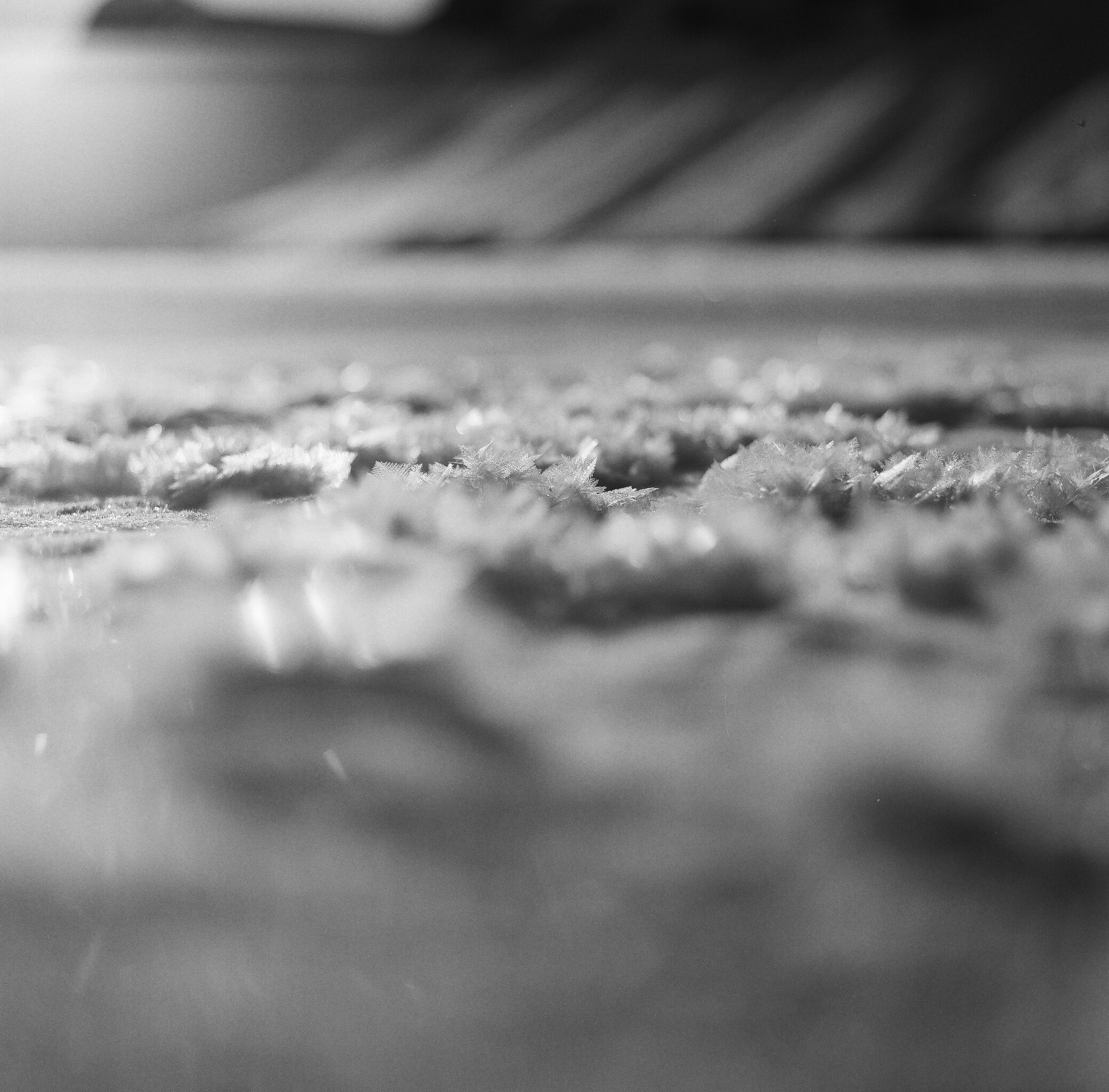
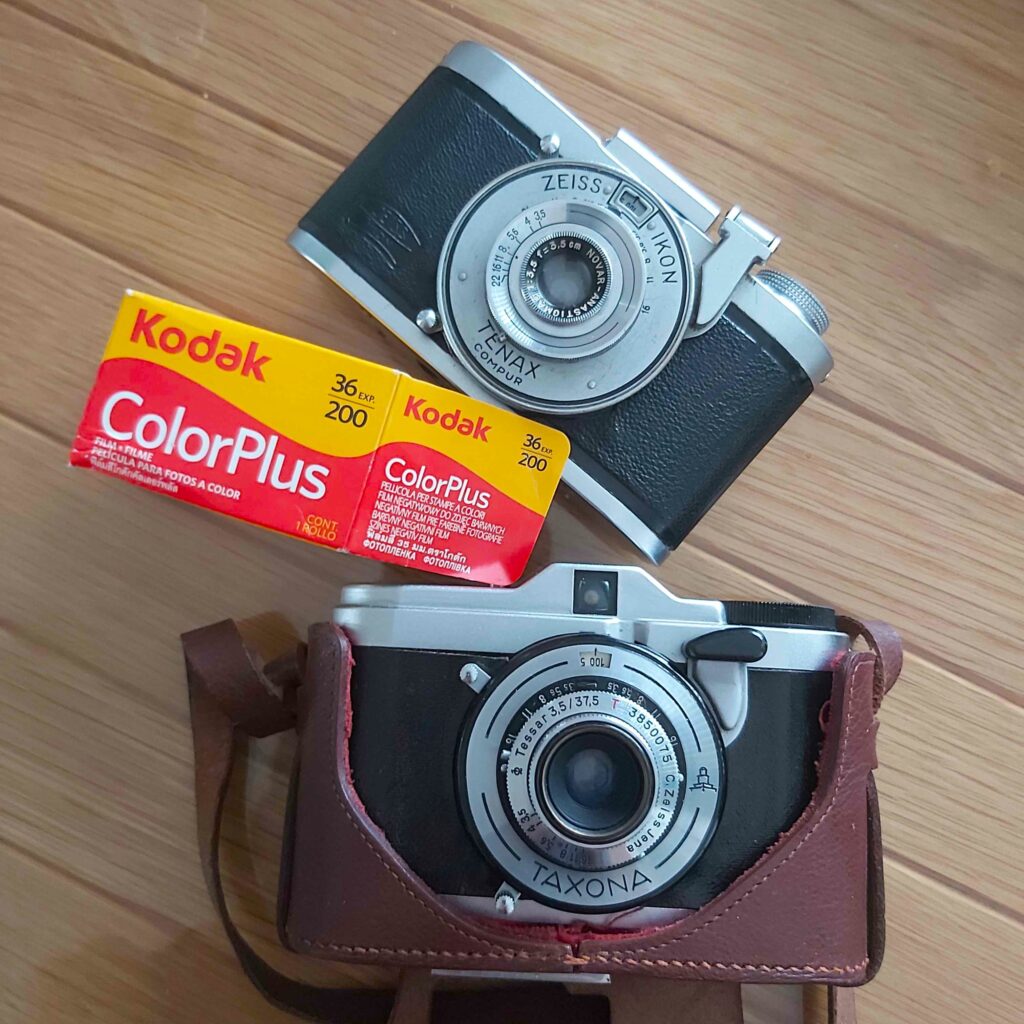
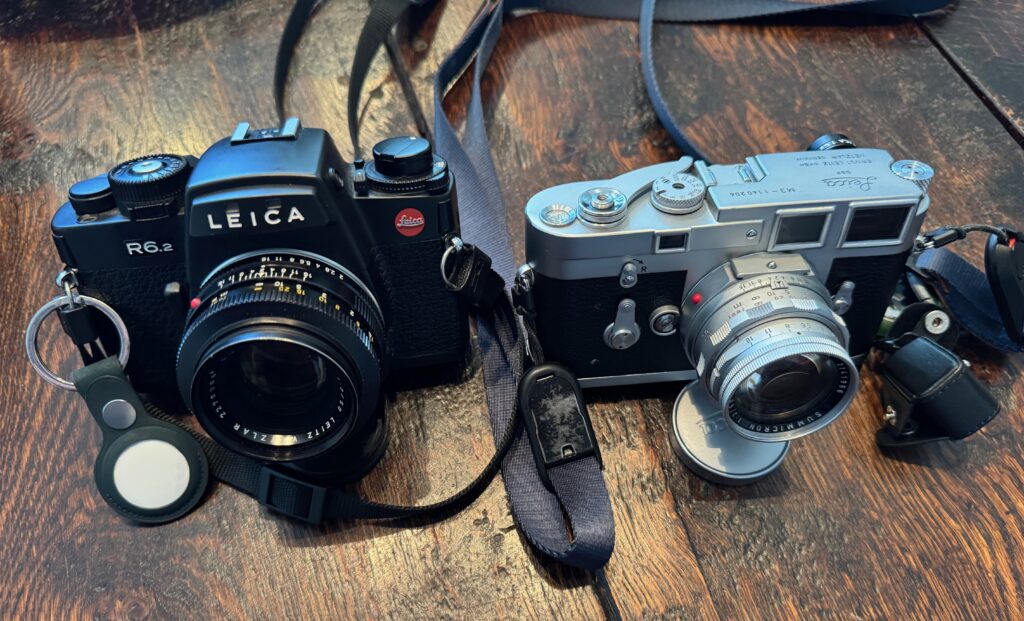
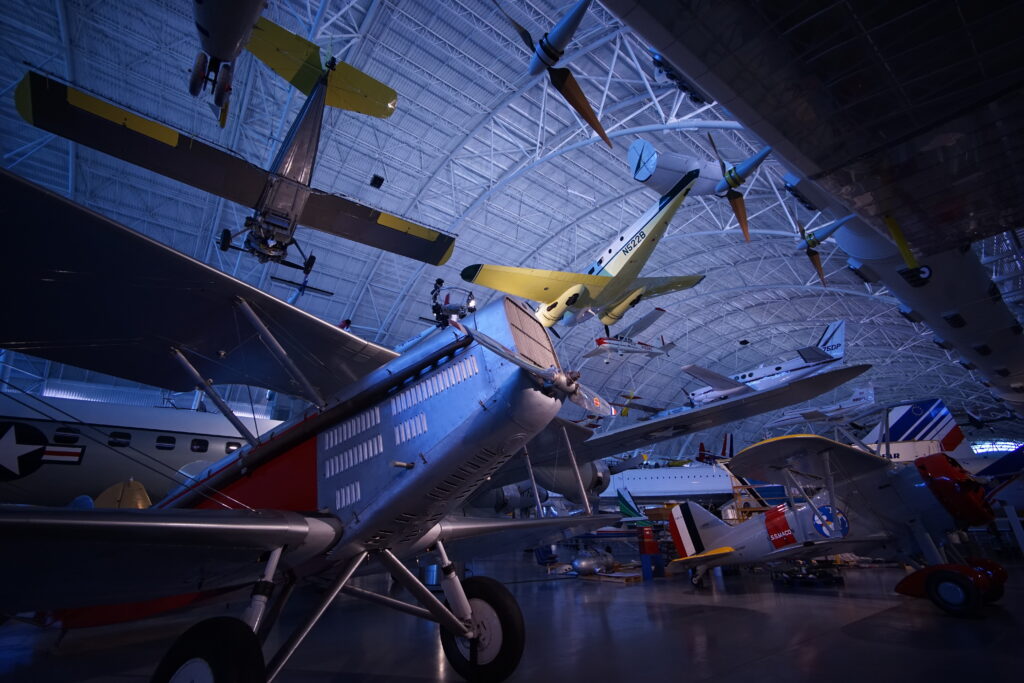
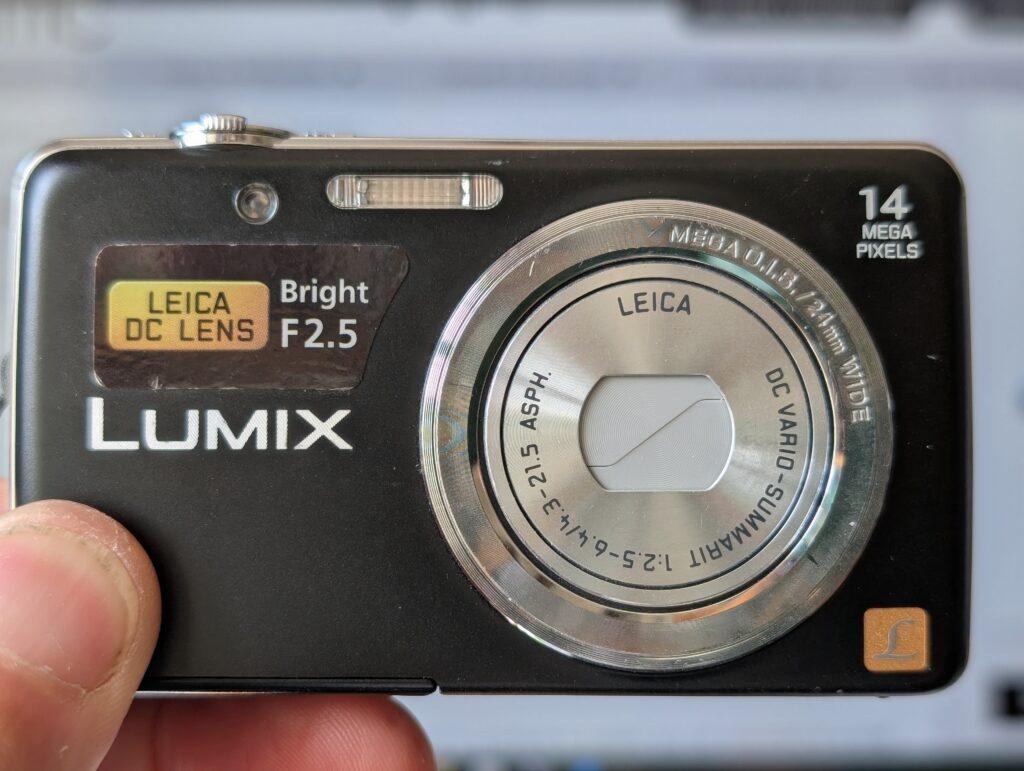




Comments
Bill Watts on A Journey into Darkness and Light – In Search of a “Go To” Black & White film stock
Comment posted: 08/05/2025
I shoot both 35mm and medium format versions of these films in a number of Olympus, Zenza Bronica and Kiev 88 cameras. Exposure is taken care of by the camera where it has metering, and by a Gossen MasterSix light meter for cameras without metering. All my cameras are between 20 and 60 years old with minimal servicing. It is unusual to get a dud frame except when I do something stupid! Usually get 36/36, 12/12, 15/15 printable negatives on every film.
Comment posted: 08/05/2025
Comment posted: 08/05/2025
Ibraar Hussain on A Journey into Darkness and Light – In Search of a “Go To” Black & White film stock
Comment posted: 08/05/2025
Lovely compositions but it seems the films should be much finer with more detail and smoother contrast.
Out of curiosity which developer are you using please?
Comment posted: 08/05/2025
Comment posted: 08/05/2025
Comment posted: 08/05/2025
Comment posted: 08/05/2025
Comment posted: 08/05/2025
Comment posted: 08/05/2025
Comment posted: 08/05/2025
Steve Cope on A Journey into Darkness and Light – In Search of a “Go To” Black & White film stock
Comment posted: 08/05/2025
Comment posted: 08/05/2025
Comment posted: 08/05/2025
Christopher Welch on A Journey into Darkness and Light – In Search of a “Go To” Black & White film stock
Comment posted: 08/05/2025
Comment posted: 08/05/2025
CHRISTOF RAMPITSCH on A Journey into Darkness and Light – In Search of a “Go To” Black & White film stock
Comment posted: 08/05/2025
Comment posted: 08/05/2025
Neal Wellons on A Journey into Darkness and Light – In Search of a “Go To” Black & White film stock
Comment posted: 08/05/2025
Comment posted: 08/05/2025
Comment posted: 08/05/2025
Gerard on A Journey into Darkness and Light – In Search of a “Go To” Black & White film stock
Comment posted: 08/05/2025
some real nice photo's you showed us.
I share Ibraar's opinion: nothing wrong with your gear (on the contrary) nothing wrong with the films, i's the lab's that let you down.
If you start developing your films your self, and when you, after a period of trying out what works best for you: stick to that combination.
This summer will be be my 60th photography birthday, when I got my Kodak instamatic and developed all my B&W films myself, as from the second cassette (the first got missing at the lab, but it was retrieved months later, fortunately).
You'll understand that I tried many dozens of combinations of film and developer, until I found my "ultimate" solution: Agfapan 100 (since many years Agfa APX) in Rodinal 1:75). Everything shot with Leicaflex SL, later also R4 and R6.
With the Rollei and Bronica, Tri-X is a favorite, also developed in Rodinal 1:75.
Hooe you'll find your real go-to combination.
Cheers,
Gerard
Comment posted: 08/05/2025
Comment posted: 08/05/2025
Mark Ellerby on A Journey into Darkness and Light – In Search of a “Go To” Black & White film stock
Comment posted: 08/05/2025
I like the shot of the East River; with the strange blotches and the motion blur it has an atmosphere about it. I'd call it a happy accident if it was my shot.
Comment posted: 08/05/2025
Steve Scarlett on A Journey into Darkness and Light – In Search of a “Go To” Black & White film stock
Comment posted: 08/05/2025
Yes, horses for courses is definitely the way to go. Though there are a lot of courses...You will need to find the right film/developer combinations for various subjects...e.g. one for Street, another for Portraits/Nudes, then for Landscape, for Still Life/Flowers, for Architecture, etc. It is a lifetime's project. Good luck.
Be that as it may (or may not...) I just want to say you have taken some very fine photos and I reckon Johnston Canyon is utterly fabulous. Keep at it !
Best,
Steve
Comment posted: 08/05/2025
Jeffery Luhn on A Journey into Darkness and Light – In Search of a “Go To” Black & White film stock
Comment posted: 08/05/2025
Doing your own film processing is cheap and easy. Once you get that step dialed in, you'll gain more control and consistancy. All of the responses you got are fine. I throw mine in. Nikkor stainless steel reels and tanks are easy to load and last forever. They are available used on eBay. I'd get the size that accomodates 2 35mm reels or one 120 roll. Next purchase should be the one that hold two 120 reels or four 35mm. I like using Kodak HC-110 developer because at 1:31 dilution it's cheap and the stock solution lasts about a year. I've used lots of film stocks but rely on Ilford HP5+ for general purposes.
Comment posted: 08/05/2025
Comment posted: 08/05/2025
Geoff Chaplin on A Journey into Darkness and Light – In Search of a “Go To” Black & White film stock
Comment posted: 08/05/2025
Comment posted: 08/05/2025
Gary Smith on A Journey into Darkness and Light – In Search of a “Go To” Black & White film stock
Comment posted: 08/05/2025
I really like your compositions but the developing on some of the film stocks leaves me cold. I guess the shot using Delta 100 and a red filter had the most pleasing tonality to my old eyes. Many of the other shots had murky/dark shadows that needed pulling.
I currently have 48 sheets of Fomapan 100 to shoot in my 4 x 5 camera and I'll be developing those in D76. I have had good results with Tri-X and HP5+ at 400. I'm not opposed to fiddling with the scanned results using my digital tools including Silver efex. So, in that sense I guess I'm not a "film purist".
Thanks for your article, I mostly shoot Tri-X and would have for sheets however this is my first foray into sheet film and Tri-X was pretty expensive compared to the Fomapan. It was interesting seeing your panoply of results!
Thanks!
Comment posted: 08/05/2025
Comment posted: 08/05/2025
Andrew L on A Journey into Darkness and Light – In Search of a “Go To” Black & White film stock
Comment posted: 09/05/2025
Developer choice makes almost as big a difference as film stock to the finished negative, so it might be nice for you to have a constant, and a point to work outwards from. For instance, I really like Fomapan films with Rodinal (especially 100 and 400), and have found Kentmere 400 to be quite pleasant and not overly grainy with Kodak TMAX dev. I've also seen great work done with Kentmere 400 and HC110 or a clone of that developer.
Comment posted: 09/05/2025
Art Meripol on A Journey into Darkness and Light – In Search of a “Go To” Black & White film stock
Comment posted: 09/05/2025
Comment posted: 09/05/2025
Ibraar Hussain on A Journey into Darkness and Light – In Search of a “Go To” Black & White film stock
Comment posted: 09/05/2025
"Universal Compact Developing Tank 2 Spiral Reel for Processing 120 135 126 127 B/W Film Camera Film Processing Equipment"
As for a scanner, for Medium Format I recommend anything from an Epson 4990 V700 V750 V800 depending on budget. You can use these for 35mm with the V700 and V800 being quite good.
For dedicated 35mm on a budget get the Minolta Dual Scan Elite 5400 which has digital ICE
If you type BelliniFoto DF2 Duo-Step B&W Film Developer a Liquid Version of Diafine into a search engine you’ll see the results and maybe some online retailer in canada – or you can buy from https://ntphotoworks.com/ who ship.
Or failing that easiest way to test with good results is Ilfotec DDX with Delta100/400 etc Films. Easy to mix 1 shot. Gives great results every time.
Also Rodinal
You’ll need a bottle of stop and fix as well.
This: is an Excellent short guise from Ilford search for Ilford Photo beginners guide to processing film
Download Vuescan for scanning or if using an Epson try their own software which isn’t bad.
And of course Lightroom for post processing!
Comment posted: 09/05/2025
Comment posted: 09/05/2025
Comment posted: 09/05/2025
Comment posted: 09/05/2025
RichardH on A Journey into Darkness and Light – In Search of a “Go To” Black & White film stock
Comment posted: 10/05/2025
"How to Get Started Developing Black & White Film for £25 (or Less) – by Sroyon Mukherjee"
No darkroom is needed. I load my film into the tank in the dark of a bathroom, and then complete the development in daylight near a sink.. I have developed a large number of 35mm and 120 rolls of B&W since reading Sroyon's excellent tutorial. The process is a pleasure, and I feel that I have control over the outcome.
Comment posted: 10/05/2025
Paul Quellin on A Journey into Darkness and Light – In Search of a “Go To” Black & White film stock
Comment posted: 10/05/2025
Comment posted: 10/05/2025
Theodore Crispino on A Journey into Darkness and Light – In Search of a “Go To” Black & White film stock
Comment posted: 16/05/2025
On my go-to films. When i got back into film in 2018 I immediately went back to TriX and despite trying a few others periodically (HP5, a couple of Rollei ones), it still remains my workhorse. It does everything I want with the the best contrast I've found. Plus I shoot either a Leica IIIF or M3 and I particularly like the vintage feel that the combo gives me. For color, I've gone solely with Ektar 100. It's far and away the best color saturation I've found and again gives me that vintage-y feel when combined with the Leicas.
Comment posted: 16/05/2025
Eagle Omomuro on A Journey into Darkness and Light – In Search of a “Go To” Black & White film stock
Comment posted: 30/05/2025
Comment posted: 30/05/2025
Chris on A Journey into Darkness and Light – In Search of a “Go To” Black & White film stock
Comment posted: 14/06/2025
Louis A. Sousa on A Journey into Darkness and Light – In Search of a “Go To” Black & White film stock
Comment posted: 15/06/2025
Comment posted: 15/06/2025